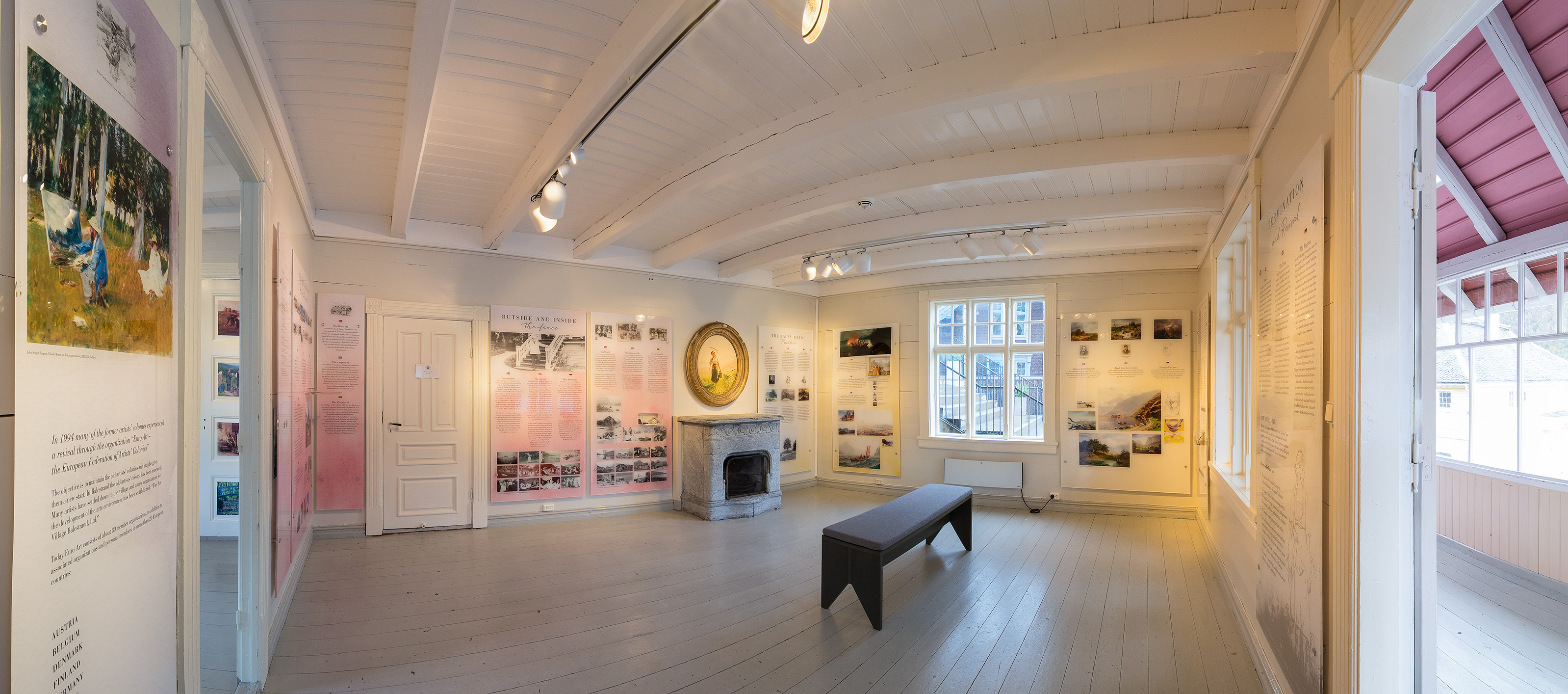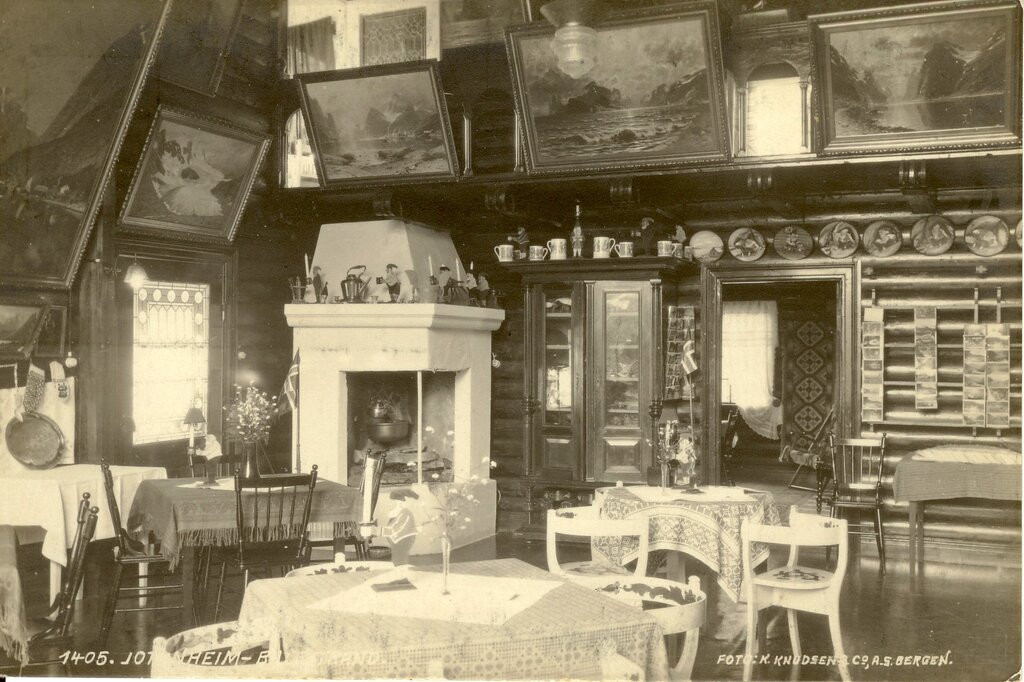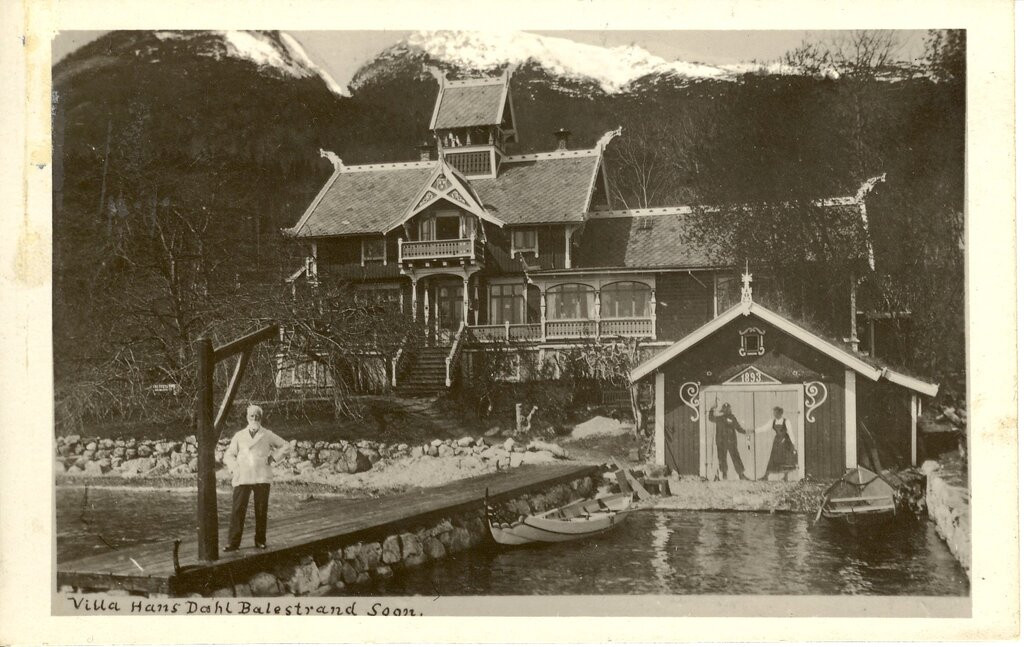The idea of artists’ colonies started around 1830 in Barbizon, southeast of Paris. This was a movement where new styles emerged and left a lasting mark on the art world. The artists’ colonies spread to various coastal, mountain and forest landscapes. It was the freedom and detachment from the strict and formalised Romanticism that provided much of the driving force behind the movement. Landscape motifs shifted towards a more realistic feel, without strict rules for composition. The landscape was the main theme, and not merely scenery.

Balestrand became connected to a European art movement quite early on. Inspired by the distinctive light, the dramatic fjord landscape and the mystique of the many historical monuments in the area, several artists established themselves in summer villas and dragon style houses in the village – and an artists’ colony emerged.

The exhibition itself is located in one of these dragon style houses, which is part of the Norwegian Museum of Travel and Tourism. There you will also get an overview of the other villas in the area, as well as a selection of prefabricated dragon style houses that could be ordered from Jocob Digre Trælastfirma in Trondheim.

